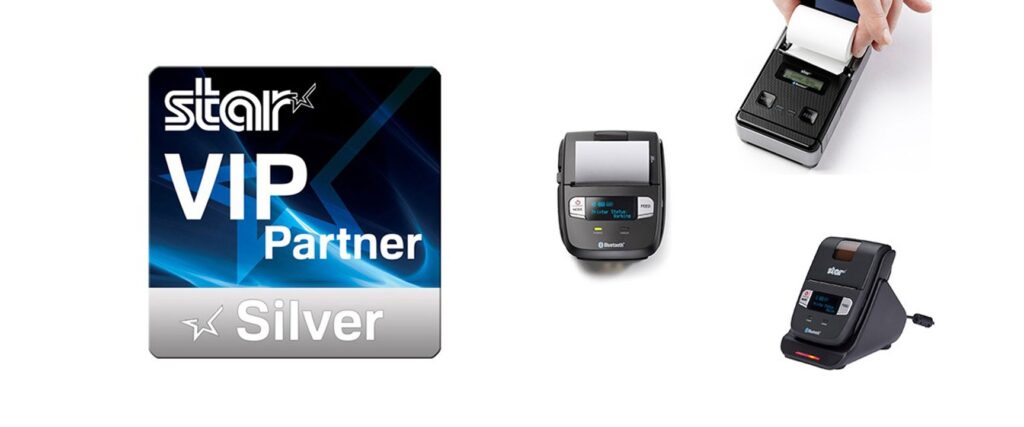Customer Experience: Your Best Weapon to Stand Out and Leave a Lasting Impression
Today, people don’t just buy a product or a service.
They buy a story. Attention. An experience.
In a fiercely competitive market with hyper-informed consumers, the difference is no longer what you sell, but how you make people feel. A slow delivery, a robotic customer service, or a poorly crafted message can instantly break trust.
On the other hand, a well-timed gesture, a frictionless journey, or a thoughtful surprise can earn you more than just a customer: it creates a fan.
In this article, you will discover:
- What customer experience really means (spoiler: it’s not just a feedback form),
- Why it’s a powerful growth lever,
- How to map, improve, and measure it,
- And most importantly: how to make it your #1 competitive edge.
What Is Customer Experience? A Simple (But Powerful) Definition
Customer Experience (CX) encompasses the emotions, perceptions, and feelings a customer experiences at every touchpoint with your brand.
It includes:
- Their first Google search,
- Browsing your website,
- The purchase process,
- Post-sale service,
- Even the final thank-you email.
It’s a complete, emotional, and evolving journey.
And most importantly: it’s subjective: Two people can have the same interaction but come away with different impressions.
According to PwC, 73% of consumers say customer experience influences their purchase decisions even more than price or quality.
Why Customer Experience Is Now Critical (and What You Risk by Ignoring It)
1. Because Customer Expectations Are Sky-High
They want to feel seen, understood, and heard.
They want quick answers. Smooth journeys. Personalized service.
In short, they want to feel important.
If they don’t? They’ll leave – often without warning.
An unhappy customer tells 15 people. A happy one? Maybe 3 to 5.
But most importantly, happy customers come back. And they cost less.
Read this article to find out more: 10 tips for a fabulous customer experience
2. Because CX Directly Impacts Your Bottom Line
Here’s what the data shows:
- +25% to 95% in profits when customer retention increases by 5% (Bain & Company).
- 86% of customers are willing to pay more for a better experience (PwC).
- Brands that lead in CX generate 4 to 8 times more revenue than those that lag behind (Forrester).
5 Pillars of an Exceptional Customer Experience
1. Map the Customer Journey
It all starts here. You need to know:
- The key touchpoints,
- Emotional triggers (positive and negative),
- Where customers get frustrated, confused, or drop off.
Pro tip: Create a Customer Journey Map with stages and the emotional states at each point (e.g., “stress” during delivery, “joy” upon receipt).
2. Build Genuine Connections Through Relationship Marketing
Forget one-off transactions. Think long-term relationships.
You’re not talking to a database. You’re talking to people.
Relationship marketing or Human to Human (H2H) involves:
- Smart segmentation,
- Personalized messaging,
- Emotional touches (e.g., handwritten notes, birthday messages, unexpected discounts).
Look to Starbucks, Asos, and Sephora for inspiration… they turn every interaction into a moment of care.
3. Embrace True Omnichannel Experiences
Omnichannel isn’t just “being everywhere”.
It’s about seamlessness across channels from your website to your app, your physical store to WhatsApp support.
Customers want:
- To never repeat themselves,
- Consistent access to their history,
- Smooth transitions between platforms.
What you need:
- A solid CRM,
- Trained, connected teams,
- A coherent content strategy across all platforms.
4. Make Every Touchpoint a Delight
Every email, interface, and conversation can be:
- An irritant, or
- A brand-building moment.
Focus on:
- UX/UI design,
- Tone of voice (friendly? premium? playful?),
- Response times (nobody likes waiting).
5. Listen. Improve. Repeat.
Without feedback, you can’t grow.
Three key CX metrics:
- NPS (Net Promoter Score): “Would you recommend us?”
- CES (Customer Effort Score): “How easy was your interaction?”
- CSAT (Customer Satisfaction Score): “Were you satisfied with the product/service?”
💡 Tip: Use micro-surveys after each interaction. The faster your response, the better your CX.
Read more: Customer experience is no longer a luxury, it’s a strategic imperative
The concrete benefits of a good customer experience (on the business side)
- + loyalty: your customers come back (and spend more)
- – advertising spend: your customers become your ambassadors
- + customer lifetime value (CLV): every customer is more profitable
- + natural referrals: stronger word-of-mouth
- + engagement on your digital channels: e-mails opened, reviews posted, stories shared
Brands that thrive on customer experience
- Zappos: ultra-reactive after-sales service, generous returns policy, 100% customer-oriented corporate culture.
- Airbnb: fluid, reassuring, community-based experience.
- Decathlon: expert advisors, simple purchasing path, easy returns.
- Netflix: advanced personalization, intuitive UX, express customer service.
All have one thing in common: customer satisfaction can’t be improvised, it has to be designed, measured and optimized.
The Phygital Experience: Blending the Physical and the Digital
What is the Phygital Experience?
“Phygital” combines “physical” and “digital” to describe a strategy that unifies online (website, social media, chatbot, email) and offline (stores, call centers, events) touchpoints into one seamless experience.
The customer perceives no disconnection between digital and physical interactions. The journey is smooth, consistent, and personalized across all channels.
Why Prioritize Phygital?
In today’s omnichannel world, phygital is more than a trend – it’s a strategic priority. Consider these stats:
- 73% of consumers use multiple channels before making a purchase (Harvard Business Review).
- 86% expect a consistent experience whether online or in-store (Salesforce).
- 65% say they are more loyal to brands that unify their experience.
A typical journey might look like:
- Browse a product online,
- Check store availability,
- Purchase on mobile,
- Return the item in-store.
How do you create a phygital customer experience?
4 Pillars of a Strong Phygital Strategy
1. Unified Customer Data
To personalize each touchpoint, unify data across channels:
- Solid CRM,
- Omnichannel tracking tools,
- Smart segmentation.
You can find all this on a single platform: RightCom XP
2. Continuity Across Journeys
Let customers start an action on one channel and finish on another. For example:
- Reserve online, collect in-store (Click & Collect),
- Try in-store, order on mobile,
- Start a support chat online, get a follow-up call in-store.
3. Immersive Technologies
Use digital tools to enhance real-world interactions:
- In-store interactive kiosks,
- Smart QR codes on packaging,
- Augmented reality for product visualization or virtual try-ons.
4. Empowered In-Store Teams
Frontline employees must:
- Be trained on digital tools,
- Reflect brand tone and values,
- Act as both physical and digital brand ambassadors.
Examples of Brands Leading in Phygital
Sephora:
- AR-based makeup testing,
- Unified customer accounts,
- Tablet-equipped staff for guided shopping.
Zara:
- Self-checkout via app,
- Fitting room reservations via mobile,
- Real-time stock updates.
Orange:
- Online appointment booking,
- Multichannel customer support,
- In-store digital kiosks.
The Phygital Challenge: Emotional Consistency
A premium, intuitive website followed by a cold, chaotic store experience? That’s a CX disaster.
Define a target emotional experience (e.g., warm, innovative, secure) and apply it consistently across every touchpoint.
Employee Experience = Customer Experience: Two Sides of the Same Coin
Why talk about employee experience in a CX article?
Because exceptional CX is impossible without engaged, trained, and empowered employees.
This is known as the EX (Employee Experience) → CX (Customer Experience) link.
Gallup found that highly engaged teams see a 10% boost in customer satisfaction and 20% higher sales.
The Mirror Effect: How Employee Experience Shapes CX
Compare these two:
- A cheerful, knowledgeable, empowered store associate,
- A frustrated, overwhelmed, undertrained agent.
Nine times out of ten, the customer’s experience reflects the employee’s own.
That’s why forward-thinking brands invest in internal experience before external relationships.
5 Key Levers of Employee Experience (EX)
1. Clear, Inspiring Onboarding
Employees who feel welcomed are 30% more productive within their first 90 days. Treat onboarding like a customer conversion journey.
2. Company Culture Aligned With CX Promise
If your brand promise is “fast, friendly, premium,” your team must experience the same internally. Otherwise, the promise rings hollow.
3. Continuous Training
Great CX = relational skills + product knowledge + tool mastery. Without ongoing learning, your service weakens.
4. Efficient, Empowering Tools
Equip staff with the right tools (CRM, internal FAQs, instant messaging) to reduce friction and increase autonomy.
5. Recognition & Feedback
Employees who feel heard and valued are more likely to go above and beyond. Regular feedback rituals are essential.
EX as an Employer Branding Asset
In a talent war, a great employee experience:
- Attracts top candidates,
- Increases retention,
- Strengthens brand representation.
The Outcome: Your customers are served by people who want to be there. And it shows.
How to Measure the Impact of EX on CX
Some companies use an Employee Net Promoter Score (eNPS) alongside customer NPS to assess alignment.
Other useful indicators:
- Turnover rate,
- Real-time customer satisfaction,
- First-contact resolution rate (linked to staff autonomy).
In Summary: Customer Experience Is Not an Option — It’s Your Superpower
- CX impacts your sales, loyalty, reputation.
- It starts before the purchase and lasts long after.
- It’s emotional, personalized, data-driven.
- And above all, it’s the ultimate way to stand out in a noisy world.
Customer experience no longer lives only on websites or in call centers. It’s lived at every touchpoint – digital and physical – and depends as much on your tools as on the humans who embody your brand.
Adopting a seamless phygital strategy, while investing in employee experience, is your best long-term differentiator.
Need help?
Want to improve your customer experience with better journeys, smarter tools, or expert training? Let’s design your tailor-made CX strategy.




